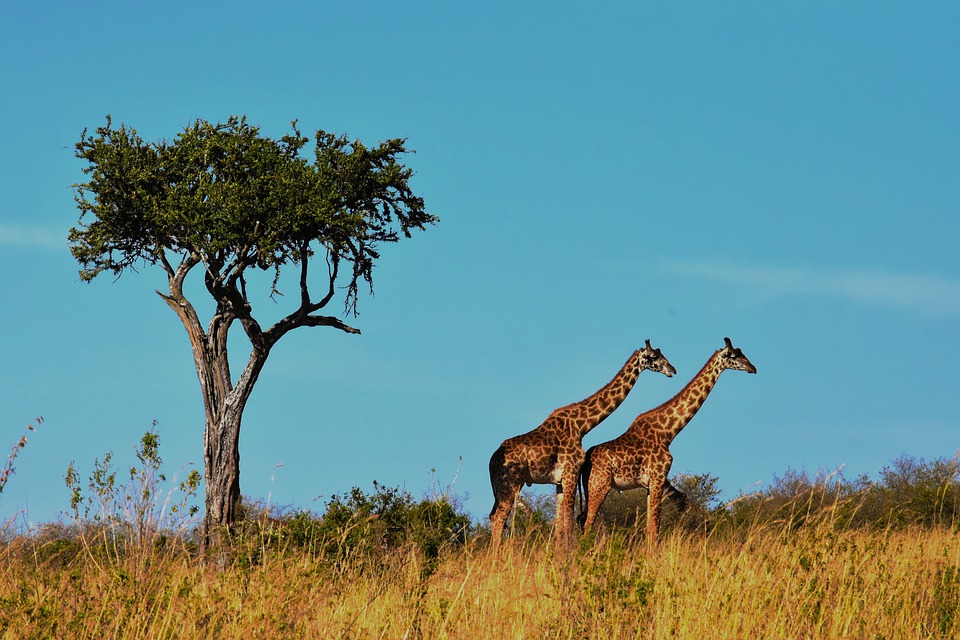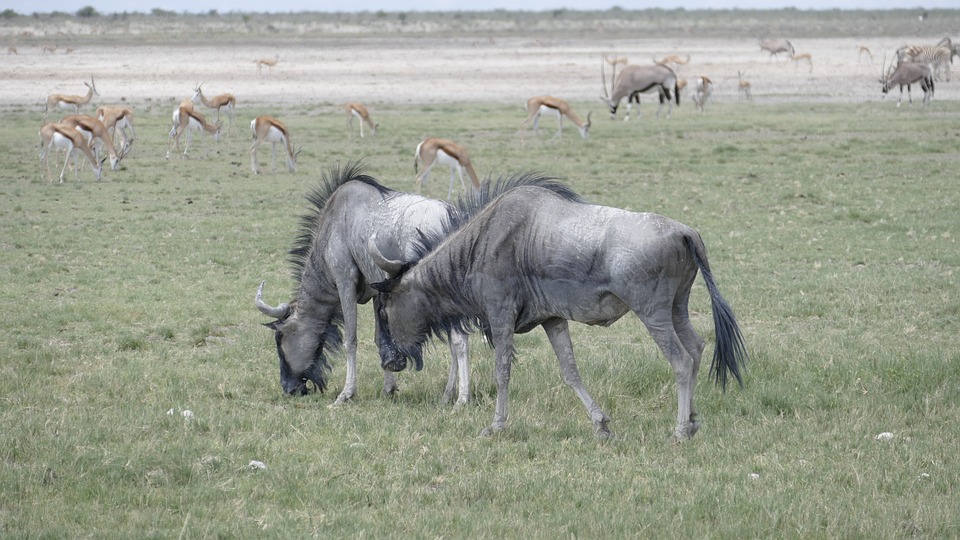
The Serengeti Safari Tour, Serengeti National Park, Tanzania, allows you to explore this beautiful National Park and get close to wildlife like never before. This tour is for people who love extreme adventures, those who search for adrenaline rushes and unforgettable memories. It’s a risky experience like no other to be face to face with wild animals that most people only get to see in movies. Join the thousands of tourists that visit the Serengeti National Park every year to enjoy this incredible safari.

The animal migration that takes place in Serengeti is what turns this National Park into a major tourist destination. When the rainy season ends, you get the opportunity to contemplate the migration of animals searching for more fertile and fresh places. Around 200,000 zebras and almost one million wildebeest travel for months from the northern hills to the south. You can also see the Big Five among the species taking part in the Great Migration. Leopards, lions, buffalos, elephants, and rhinos, as well as giraffe herds that gracefully walk the savanna.
Thing to do
Northern Serengeti
The migration cycle varies depending on the rainy season. Of course, wildebeests need water constantly, and when they do not find it, they begin to mobilize in search of it. And as they are gregarious animals, when one goes in one direction, the others follow.
Now, the Lobo area in Northern Serengeti has permanent springs, and some animals stay here all year long, especially buffalos. For this reason, leopards and lions are abundant in this area. If you get up early in the morning to drive the Lobo loop, you might spot some lions walking close to the road. Also, this area is part of the route that migrating animals take on their way back from Masai Mara.

Central Serengeti
Your experience in the Lobo area is not complete if you don’t go to the Seronera Valley next. The Central Serengeti is famous because its wildlife is as abundant as it can be, and the Seronera Valley, for its high population of lions, leopards, and cheetah. There’s a reason why it’s called the Big Cat Capital of Africa! Besides, the Seronera River is backdropped by impressive kopjes (rocky outcrops).
Aside from the big cats, you can spot buffalos, crocodiles, elephants, jackals, foxes, and impalas. And just like in the Lobo area, the Great Migration passes through the Seronera Valley.

Southern Serengeti
Wildebeest run freely on the golden grass, creating a curtain of dust with their hurried kicks, their heads and tails moving back and forth. In the green season, the males struggle to establish their territory and gather as many females as possible to mate. Wherever you go, the sound of thousands of hoofs colliding with the ground fills the air.
Southern Serengeti has the privilege of experiencing the Great Migration on its full cycle. The herds of wild animals arrive once the green season starts, then babies are born in the early months of the year, and finally, the herds retreat with the dry season.
Here, you can take part in walking safaris, which increases the opportunities for spotting smaller creatures. Besides, Southern Serengeti offers hot-air balloon services, giving you a new and wonderful perspective.

Western Serengeti
This area, known as the Corridor, stretches across to Lake Victoria, and since there are poor communication and difficult roads, people often keep it out of their list. However, the Corridor is a highly important part of the Serengeti experience. This valley is home to elephants, hippos, giraffes, gazelles and crocodiles, permanent residents of the Western Serengeti. If you’re lucky, you can even spot the Black-and-white Colobus monkey. You can see the herds of the Great Migration cut across the Grumeti River, and hidden crocodiles waiting for the perfect prey.
Just like on Southern Serengeti, the Corridor offers walking safaris and hot-air ballooning. The area also gives you the opportunity of learning about the Maasai tribe, lifestyle, and customs. The best part of exploring the Corridor is the solitude that makes you feel closer to nature.

How to get there
The Kilimanjaro Airport is the closest international airport to the Serengeti. Arrange your transport in advance, since regular transport is not likely to be available at Kilimanjaro airport. One option is to go to Arusha and take a small aircraft either to the Seronera Airstrip on Central Serengeti, or the Kirawira Airstrip on Western Serengeti. The road from Arusha to the Serengeti National Park is 325km long and the drive takes around 8 hours, passing through some of the best sites of Tanzania.
When to go
Tanzania experiences two dry seasons and two rainy seasons. First, the short dry season starts in January and lasts until March, and followed by the long rain season, from late March to May. Then, the long dry season lasts from June to October, and lastly, the short rain season of November to January.
From April to July, the Great Migration travels northwards and then, from October to December, they go back south. The southern area is deserted from May to October since the dry season doesn’t leave anything to graze.
The long dry season is when the Serengeti is the busiest, especially July and August. April has stronger rains, which can make your experience challenging. Visit southern Serengeti in February and enjoy the beautiful spectacle of wildebeest giving birth and the babies taking their firsts steps. Hot-air ballooning in the Corridor is only available from June to August.
How long do I go for
Serengeti’s safaris can be up to 13 days long; check here for the safari that best suits your budget and travel dates.
Planning
The Southern Serengeti is a top tourist destination during the Great Migration, but there are few lodging options. Book in advance if you are visiting from December to May. Keep in mind that once the Great Migration ends, most lodges in the area close for the season.
Inside Information
Many tour operators offer safaris in the Serengeti National Park and thus adapt to the vast majority of budgets. On the other hand, Abercrombie & Kent is an organization that arranges safaris in luxury camps that follow the migrations. Central Serengeti is ideal for budget travelers, while the Western Corridor is better for higher-end travelers.

Entry Requirements
Tanzania Entry
Visitors to Tanzania require a passport valid for at least six months after the date of travel. Almost all visitors to Tanzania require a tourist visa, which costs between US$20 and US$100. You can get a single-entry 90-day tourist visa upon arrival at Dar es Salaam, Kilimanjaro and Mwanza if you pay in cash.
Serengeti National Park Entry
Keep in mind that park fees in Tanzania can be very expensive. In the Serengeti National Park, the fees are per person; the park fee is US$71 per day, for camping it is US$48 per person per night and US$30 per vehicle per day.

Local Laws and Customs
There are some rules that you have to follow to preserve the Serengeti National Park. Approaching too close and disturbing animals is prohibited, as well as making any unacceptable noise. Of course, picking flowers, throwing trash in the grounds or destroying vegetation in any way is an offense. The speed limit within the Park is of 50 km/h; also, pets and firearms are not allowed into the Park. Since the Southern Serengeti goes outside the National Park’s limits, off-road driving is allowed, unlike the rest of the park.

Money
The currency of Tanzania is known as the Tanzanian shilling, denoted by the symbol “TSh”, “/=” or “/-” following the number. Notes are of different colors: TSh 10,000 (red), TSh 5,000 (violet), TSh 2,000 (brown), TSh 1,000 (blue), and TSh 500 (green). However, the TSh 500 bill changed to coinrecently. The coins are of 500, 200, 100 and 50 denominations.
As of January 2020:
- US$1 ≈ TSh 2,300
- €1 ≈ TSh 2,600
- UK£1 ≈ TSh 3,000
Taxis from the Kilimanjaro Airport to Arusha are around US$50, and flights to the Seronera Airstrip cost US$165.
Tipping
A 10% tip at restaurants is the most commonly one. Also, travelers usually tip US$5 per day at lodge based safaris; US$10 per day for driver guides and, for camping on mobile safaris, US$5 per day for the camp staff.
What to buy
There are not many human settlements on the Serengeti National Park, so there is not much to buy. But in Arusha there are curio markets, where you can find interesting things to buy, like carvings, paintings, jewelry and different textiles.

Safety and Security
Crime
Pickpockets and con artists are very common in Tanzania’s tourist areas, but so is violent crime, especially at night in isolated areas. Some of these thiefs are kids that have unfortunately been forced to steal and join a life of crime from a very young age. Don’t let your guard down and never carry your valuables on your pockets.
Bribing is also common; becareful if you are asked to pay for an On-the-spot fine. The most tipical trick they use is telling tourist that there is a TSh 40,000 fine to pay, but that they can pay TSh 20,000 or TSh 30,000 without going to the Police Station to pay a higher fine. If you find yourself in this situation, ask bystanders for help, preferably a group of people. Scammers tend to give up on their schemes if there are too many people around. You can also insist on going to the local police or your country’s embassy to get help with translation.
Terrorism
Attacks in Tanzania usually target the local security forces only, but they could be indiscriminate and even be directed at places visited by foreigners. However, there hasn’t been any serious attack in Tanzania in recent years.
Health
Follow all of Serengeti National Park’s regulations and stay within the areas designated as safe. If you need emergency medical assistance, dial 112 and ask for an ambulance. Make sure you have travel health insurance and enough funds for medical treatment since medical facilities are limited outside Dar es Salaam.
Malaria, cholera, and dengue are common diseases in Tanzania. Besides, in Serengeti, there have been cases of sleeping sickness caused by bites from tsetse flies. Always carry mosquito repellents.
Check Tanzania’s specific health advice on TravelHealthPro at least 8 weeks before your trip.
Natural Disasters
During the long rainy season, rains are heavier and come with strong winds. It is important to mention earthquakes, which are common in Tanzania since the country stands on an active fault line.

History
Serengeti’s ecosystem is one of the oldest ever, and the area was uninhabited for a long time. That is until the Maasai migrated there around a hundred years ago. This unique and fascinating ecosystem is a source of inspiration for writers, filmmakers, scientists, and photographers. Specifically, the famous Pride Rock from Disney’s The Lion King is located in Central Serengeti: the Simba Kopje. The Serengeti National Park was declared as such in 1951 and a UNESCO World Heritage Site in 1981.

Websites
Other Nearby Attractions
The Ngorongoro Crater
The Ngorongoro Crater or Ngorongoro Conservation Area is another UNESCO World Heritage. The crater is the caldera of an ancient volcano, sometimes referred to as a natural utopia. The caldera forms a savanna of 100 square miles (260 km2) bordered by a mountainous ring.
If you loved this article or found it useful, don’t forget to share it with your adventurous and travel-hacking friends! If you want more posts like this, follow us on Youtube, Instagram, Pinterest, Twitter, Facebook or Reddit and subscribe to our newsletter!

